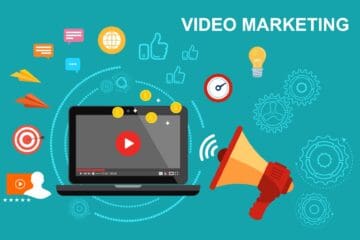Businesses must have a high-performing sales team to drive revenue and growth. In today’s competitive market, companies must implement best practices to ensure their sales teams are efficient, motivated, and successful.
From hiring the right talent to providing ongoing training and support, there are key strategies that can elevate a sales team to new heights of performance. Let’s check these out.
1. Defining Your Sales Strategy
This is the process of identifying who your ideal customers are, what your sales goals look like, and how you plan to reach these objectives.
This strategy operates as a roadmap, guiding your sales team through targeted approaches and methodologies to effectively reach and surpass sales targets.
Let’s delve into how you can craft one that sets your team up for success.
- Identify Your Target Market: Understand who your ideal customers are by analyzing market trends, customer needs, and competitor positioning.
- Set Clear Sales Objectives: Define specific, measurable, achievable, relevant, and time-bound (SMART) sales goals to give your team clear targets to aim for.
- Align Tactics with Business Goals: Ensure that the sales tactics and processes you choose directly contribute to your overall business objectives, creating a unified strategy.
- Leverage Sales and Market Data: Use data from your sales team and market research to refine your strategy, focusing on what works best for reaching your target audience.
- Continuous Strategy Evaluation: Regularly review and adjust your sales strategy based on performance data and market changes to stay ahead of the curve.
A well-crafted sales strategy is pivotal, as it provides a focused plan for your team to follow, ensuring all efforts are directed towards achieving your business goals.
2. Recruiting the Right Talent
This means identifying and hiring individuals who possess the ideal blend of skills, experience, and cultural fit for your sales team.
This process involves a strategic approach to sourcing, evaluating, and selecting candidates who are most likely to succeed in your sales environment and contribute to team goals.
Let’s explore practical steps to make this a reality.
- Define the Ideal Candidate Profile: Clearly articulate the skills, experiences, and personality traits that make up your ideal candidate to streamline the recruitment process.
- Utilize Diverse Sourcing Channels: Reach potential candidates through a variety of channels, including social media, recruitment platforms, and networking events, to widen your talent pool.
- Implement a Structured Interview Process: Use a consistent set of questions and assessments to fairly evaluate each candidate’s fit for the role and your company culture.
- Focus on Cultural Fit: Assess candidates not just for their sales skills but also for how well they align with your company’s values and team dynamics.
- Leverage Employee Referrals: Encourage your current employees to refer candidates they believe fit your defined profile, often leading to higher quality hires.
Securing the right talent is crucial for building a sales team capable of achieving exceptional results and sustaining long-term growth.
3. Onboarding New Team Members
This involves integrating them into your company by providing all the necessary information, tools, and training to start their journey on the right foot.
A strategic onboarding process ensures new hires are acquainted with company policies, products, and sales techniques, tailoring the experience to fit their individual strengths and areas for improvement.
To make the onboarding process as effective as possible, here are some targeted strategies to ensure your new hires are poised for success.
- Create a Welcome Plan: Design a structured plan for the first few weeks that includes meetings with key team members, training sessions, and introductory projects.
- Provide Comprehensive Product Training: Ensure new hires have a deep understanding of your products or services, including features, benefits, and the value they offer to customers.
- Focus on Cultural Integration: Help new team members assimilate into your company culture through team-building activities and introductions to the company’s values and mission.
- Assign a Mentor or Buddy: Pairing new hires with a seasoned mentor or buddy can provide guidance, answer questions, and ease the transition into their new role.
- Set Clear Goals and Expectations: Clearly communicate the expectations and performance goals for the first few months, giving new hires concrete objectives to strive towards.
A thorough and thoughtful onboarding process is key to empowering new hires to contribute effectively and quickly become valuable members of your sales team.
4. Continuous Learning and Skill Enhancement
These involve the ongoing development of your sales team’s abilities and knowledge to stay competitive and effective.
This process includes providing a variety of training and development opportunities, such as workshops, webinars, and coaching, tailored to the evolving needs of the sales team and market dynamics.
To keep your team at the forefront of sales excellence, consider these practical steps for fostering an environment of continuous learning.
- Regular Training Sessions: Organize frequent training workshops and sessions focused on both the core competencies of sales and emerging trends in the industry.
- Access to Learning Resources: Provide your team with access to an array of learning materials, including books, online courses, and industry publications, to encourage self-directed learning.
- Mentoring and Coaching Programs: Establish mentoring or coaching relationships that allow less experienced salespeople to learn from seasoned veterans through regular, structured interactions.
- Peer Learning Opportunities: Facilitate peer-to-peer learning sessions where team members can share insights, challenges, and successes, enriching the collective knowledge.
- Performance Feedback and Personal Development Plans: Offer constructive feedback on performance regularly and work with each team member to develop personalized learning and development plans.
Cultivating a culture of continuous learning within your sales team boosts individual performance and significantly contributes to the long-term success and adaptability of your business.
5. Incentive Structures and Rewards
These are systems designed to motivate and recognize your sales team’s achievements, aligning their efforts with the company’s goals.
These systems work by offering tangible or intangible rewards that are directly tied to individual or team performance metrics, encouraging higher levels of productivity and engagement.
Let’s dive into how you can design incentive structures and rewards that truly resonate with your sales team and drive performance.
- Align Incentives with Goals: Ensure that the incentives you offer directly support your business objectives and encourage the behaviors that lead to sales success.
- Variety of Rewards: Offer a range of rewards to cater to different preferences within your team, from cash bonuses and luxury trips to extra days off or public recognition.
- Transparent Criteria: Make the criteria for earning incentives crystal clear, so team members know exactly what they need to achieve to earn rewards.
- Regular and Timely Recognition: Recognize achievements on a regular, ideally immediate, basis to keep motivation high and affirm the value of hard work.
- Personalize Rewards: Tailor rewards to individual achievements and milestones to make them more meaningful and impactful for each team member.
Well-crafted incentive structures and rewards are crucial for fostering a motivated sales environment, driving team performance, and achieving outstanding business results.
6. Fostering a Collaborative Team Environment
This means creating a workplace culture where open communication, mutual support, and shared goals are the norm.
It works by implementing practices that encourage team members to work together effectively, share knowledge, and support one another’s successes.
Let’s explore how to nurture this collaborative spirit within your team, ensuring everyone feels part of a unified effort.
- Encourage Open Communication: Promote an atmosphere where team members feel comfortable sharing ideas, feedback, and concerns without fear of judgment.
- Regular Team Meetings: Hold frequent team meetings to discuss progress, address challenges, and celebrate successes, keeping everyone aligned and informed.
- Cross-Functional Projects: Initiate projects that require cross-departmental cooperation to broaden perspectives and deepen team connections.
- Joint Goal-Setting: Involve the team in setting shared goals to foster a sense of ownership and collective responsibility for outcomes.
- Recognize and Celebrate Team Achievements: Acknowledge and reward the team’s accomplishments, highlighting the importance of collaborative efforts in achieving success.
A collaborative team environment is key to unlocking the collective potential of your sales team, leading to greater innovation, satisfaction, and performance.
7. Setting and Tracking Key Performance Indicators
This involves defining specific metrics that measure the performance of your sales team against its goals.
KPIs serve as benchmarks for success, providing a data-driven framework for evaluating individual and team achievements and identifying areas for improvement.
Let’s dive into how you can effectively set and monitor these vital metrics to maximize your team’s performance.
- Define Clear and Relevant KPIs: Choose KPIs that directly reflect your team’s goals and priorities, such as sales revenue, customer retention rates, and lead conversion ratios.
- Communicate Expectations Clearly: Ensure every team member understands what KPIs are being measured, why they matter, and how their efforts contribute to the team’s success.
- Use Real-Time Tracking Tools: Implement software and tools that allow for real-time monitoring of KPIs, enabling prompt adjustments and interventions.
- Regular Review and Feedback Sessions: Hold frequent review sessions to discuss KPI progress, celebrate achievements, and address challenges, fostering a culture of continuous improvement.
- Customize KPIs to Individual Roles: Tailor KPIs to match the specific roles and responsibilities within your team, ensuring a fair and motivating assessment of performance.
Effectively set and tracked KPIs are the backbone of a high-performing sales team, guiding strategy, measuring progress, and driving towards success.

8. Leveraging Sales Analytics for Growth
This involves using data analysis tools to understand customer behavior, market trends, and team performance for strategic growth.
Sales analytics process large volumes of data to reveal patterns and insights, guiding decisions that improve sales strategies and outcomes.
With the groundwork of sales analytics explained, let’s explore how you can harness this powerful tool to propel your team forward.
- Integrate Comprehensive Data Sources: Combine data from various sources, including CRM systems, social media, and sales records, to get a holistic view of your sales operations.
- Utilize Predictive Analytics: Apply predictive analytics to forecast future sales trends, anticipate customer needs, and identify potential areas of churn or opportunity.
- Focus on Actionable Insights: Analyze your data with the intention of uncovering actionable insights that can lead to practical changes in your sales strategies.
- Customize Analytics to Sales Goals: Tailor your analytics to measure metrics directly aligned with your specific sales objectives, ensuring relevance and clarity in your strategies.
- Train Your Team on Data Interpretation: Equip your sales team with the skills to understand and act on analytics insights, fostering a culture of data-driven decision making.
Effectively leveraging sales analytics is crucial for staying competitive in today’s market, enabling your team to make informed decisions that drive growth and efficiency.
9. Integrating CRM Systems
This means incorporating customer relationship management software into your sales operations to manage interactions, track leads, and enhance productivity.
A CRM system centralizes customer data, providing a unified platform for tracking interactions, managing sales pipelines, and analyzing customer behavior.
To get the most out of CRM integration, here are some practical tips to ensure your sales team can leverage its full potential.
- Customize to Fit Your Sales Process: Tailor your CRM system to align with your sales cycle and processes, ensuring it supports your team’s workflow effectively.
- Ensure Team Training and Adoption: Provide comprehensive training to your sales team on how to use the CRM system, emphasizing its benefits to encourage adoption.
- Maintain Data Quality: Implement practices to keep data accurate, complete, and up-to-date, ensuring your team relies on dependable information for decision-making.
- Integrate with Other Tools: Connect your CRM system with other sales and marketing tools to create a seamless flow of information across platforms.
- Leverage Analytics for Insights: Utilize the analytic capabilities of your CRM to gain insights into customer behaviors, sales performance, and opportunities for growth.
Effectively integrated CRM systems are foundational to modern sales success, enhancing customer relationships, operational efficiency, and strategic decision-making.
10. Utilizing Sales Automation Tools
This means employing software to handle routine sales tasks, freeing your team to focus on more strategic activities.
These tools streamline sales processes by automating tasks such as email communication, data entry, and lead management, enhancing efficiency and accuracy.
Let’s pinpoint strategies to effectively incorporate sales automation tools into your workflow for maximum impact.
- Identify Repetitive Tasks: Pinpoint the tasks that consume a significant amount of your team’s time without adding strategic value, marking them as candidates for automation.
- Choose Tools That Integrate Easily: Select automation tools that seamlessly integrate with your existing CRM and sales platforms to avoid data silos and workflow disruptions.
- Customize Automation to Fit Your Sales Cycle: Tailor automation rules and workflows to match your specific sales process, ensuring they enhance rather than complicate your pipeline management.
- Train Your Team on Automation Tools: Provide thorough training for your team on how to use automation tools, focusing on how they can use these tools to enhance their work.
- Monitor and Optimize Automation Strategies: Regularly review the effectiveness of your automated processes and be ready to adjust them based on performance data and feedback from your team.
Incorporating sales automation tools into your operations is crucial for improving efficiency, enabling your team to dedicate more time to engaging with customers and closing deals.
Harnessing Beest for Sales Team Excellence
In the quest to assemble and cultivate the best sales team, integrating innovative tools and platforms can significantly enhance your strategy. Beest.app emerges as a formidable ally, offering a suite of features designed to optimize sales team performance, motivation, and engagement.
Here’s how Beest can revolutionize your approach to building a high-performing sales team.
Aligning Performance Metrics
Beest enables sales leaders to set points for harmonizing performance metrics across campaigns, teams, and regions, ensuring a unified and objective measure of success.
This alignment fosters a culture of transparency and accountability, encouraging teams to strive towards common goals.
Custom Knowledge Tests and Resources
With the ability to create tailored knowledge tests, Beest ensures that your sales team has the necessary expertise before engaging in campaigns.
Adding resources and materials directly into the platform equips your team with easy access to vital information, ensuring they are well-prepared to meet customer needs.
Instant Performance Insights and Recruitment Tools
The platform provides instant access to performance indicators, allowing sales leaders to make informed decisions swiftly. Furthermore, Beest’s recruitment module streamlines the hiring process, ensuring that only the best talent is onboarded.
Tracking the progress of new hires from day one maximizes their integration and effectiveness.
Enhanced Training and Quality Assurance
Beest’s campus module streamlines training, making it easier to onboard new team members and continuously develop existing ones.
The customer survey and smart QA/Fraud control module elevate customer interactions by ensuring high-quality engagements.
Motivation Through Competition and Recognition
Beest drives motivation by offering top lists, podiums, and all-time highs, alongside over 80 out-of-the-box badges and rewards.
The option to add custom badges upon request and challenge colleagues to informal battles introduces a dynamic and competitive edge to everyday tasks.
Targeted Campaigns and Incentives
For sales reps, having access to campaigns and the requirement to pass related knowledge tests ensures that only qualified personnel engage with clients.
The ability to compete on sales, points, or deadlines, with clear targets and prizes, keeps the team focused and driven.
Seamless Integration and Personalized Learning
Setting up knowledge tests and customizing questions via the management dashboard simplifies the process of ensuring team competency.
By providing a personalized learning environment, Beest supports the continuous growth and development of each team member.

Final Thoughts | Elevating Your Sales Game with Beest
Armed with the insights from our guide, you’re on track to lead a sales team that not only meets but exceeds expectations.
Remember, the heart of a thriving sales team beats with dedication, clear communication, and a collective pursuit of excellence.
To truly revolutionize your sales process and keep your team aligned, motivated, and ahead of the curve, consider Beest.app. With its powerful suite of tools for performance tracking, bespoke educational resources, and engaging motivational features, Beest.app is your secret weapon for building and maintaining a high-octane sales force.
Ready to transform your sales strategy and outcomes? Explore the difference Beest can make with a free demo today.

















